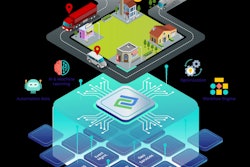
Much has been written about the fragility of the IT supply chain in the past year, with a major focus on the semiconductor shortage. It’s been such a marquee issue that Congress passed the U.S. Innovation and Competition Act, which included $52 billion in federal investments for domestic semiconductor research, design and manufacturing.
But, as many industries have realized, the supply chain issues run deeper than auto manufacturing or semiconductors – they are being felt across many parts of our daily lives. Basic commodities and products are being held up by logistical challenges across industries. Issues in the IT industry will only become more pronounced as the business world continues to reopen and demand for digital solutions continues to grow. Supply constraints could persist beyond the next 24 months.
In addition to market-related challenges, other external factors like climate change and commodity shortages are key drivers of supply chain issues. These obstacles may seem overwhelming, but OEMs, technology partners and endpoint users have gained a deep understanding of how to best navigate today’s unexpected turns.
Thriving despite supply chain challenges
The most critical tool business leaders have to achieve is flexibility and longer lasting technology in forecasting. Either by working within their organization or finding a trusted partner for data and analytics, more companies must keep an eye on the future. Leaders armed with the knowledge of potential supply chain vulnerabilities, shortages, spikes in demand and other operational challenges can proactively avoid issues before they become business chokepoints.
Most manufacturers are now telling customers to forecast out at least 10 weeks. Business leaders must ask themselves if they have the internal capability to see that far out (and beyond). The uncomfortable truth is very few organizations have the capacity or inclination to do this kind of deep analysis. Simply put, with more information and trusted analytics, leaders can make smarter decisions to meet their growing technology needs. When it comes to proper forecasting, you can’t cut corners and expect the same results.
Demand exploded this past year for technology and will continue to grow in the near future. Hardware back orders are commonplace as the PC market continues to see significant growth. Keeping a cost-effective mindset and finding ways to extend the lifecycle of devices is crucial to alleviate procurement vulnerabilities.
Schools have already learned this. Spending $150 on a Chromebook for each student is more cost effective than buying five textbooks at $70 each. Plus, once the technology is adopted, school leaders now just need to cycle and refresh new computers as opposed to a full rollout (and buying new textbooks every few years).
Businesses can apply similar thinking. Questions to ask include, What can be automated? What tools are employees using that can be better tracked and managed electronically?
Even simply identifying what employees are using which devices can inform how long a device’s lifecycle will last. Is the device under heavy daily use for mission-critical tasks? It may be a candidate for replacement or refurbishment early and often. But, if it is mostly being used to answer emails and browse the web, then that device could last 5-6 years and simply be refurbished instead of completely replaced. This kind of usage analysis and prioritization based on user personas allows leaders to make the smartest possible decisions when acquiring scarce IT resources.
Adopting DaaS
Perhaps the biggest paradigm shift in technology acquisition that can help businesses avoid supply chain issues is embracing the Devices-as-a-Service (DaaS) model. When businesses purchase hardware and software through a subscription model, they can get around critical supply chain vulnerabilities while also enabling growth.
Importantly, it passes the responsibility of sourcing the technology to trusted partners and manufacturers that know what’s “on the shelf” and which can prioritize the needs of each client. Instead of putting precious capital expenditure and internal personnel resources into finding and acquiring the technologies your business needs, DaaS eases the process and makes procurement endlessly scalable.
DaaS also increases the adoption of cloud architectures and virtual desktop infrastructure. Both have become essential to establishing work from anywhere, allowing for greater flexibility as organizations define return-to-work plans while the world reopens. New hybrid work models give the workforce greater mobility, allowing secure access from anywhere and on a wider variety of devices. Plus, it’s not limited to the current technology in use today, and critical data and business processes can easily carry over through upgrades and technology changes.
Adopting a DaaS IT model may create a whole paradigm shift for many organizations and a thoughtful strategy – along with a provider that understands your specific business needs – is essential to evolving how devices are managed. Yet there are few better business models when it comes to securing vital IT assets to grow and thrive in challenging environments, including avoiding major supply chain vulnerabilities. It gives leaders the flexibility to work with what’s on the shelf and avoid the typical supply chain hang-ups while also keeping capital expenditures down.
Business leaders’ next steps
The hard truth is the supply chain issues will persist for the near future, and critical IT supplies will be especially affected by these shortcomings. Luckily, businesses have options to mitigate these risks and ensure they have all the tools they need to succeed.
Decision makers with a flexible, cost-efficient mindset and the willingness to gain a deep understanding of their technology needs are equipped to meet the challenges of the current supply chain and continue to thrive regardless of circumstances beyond their control.



















